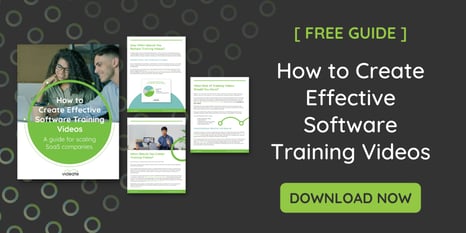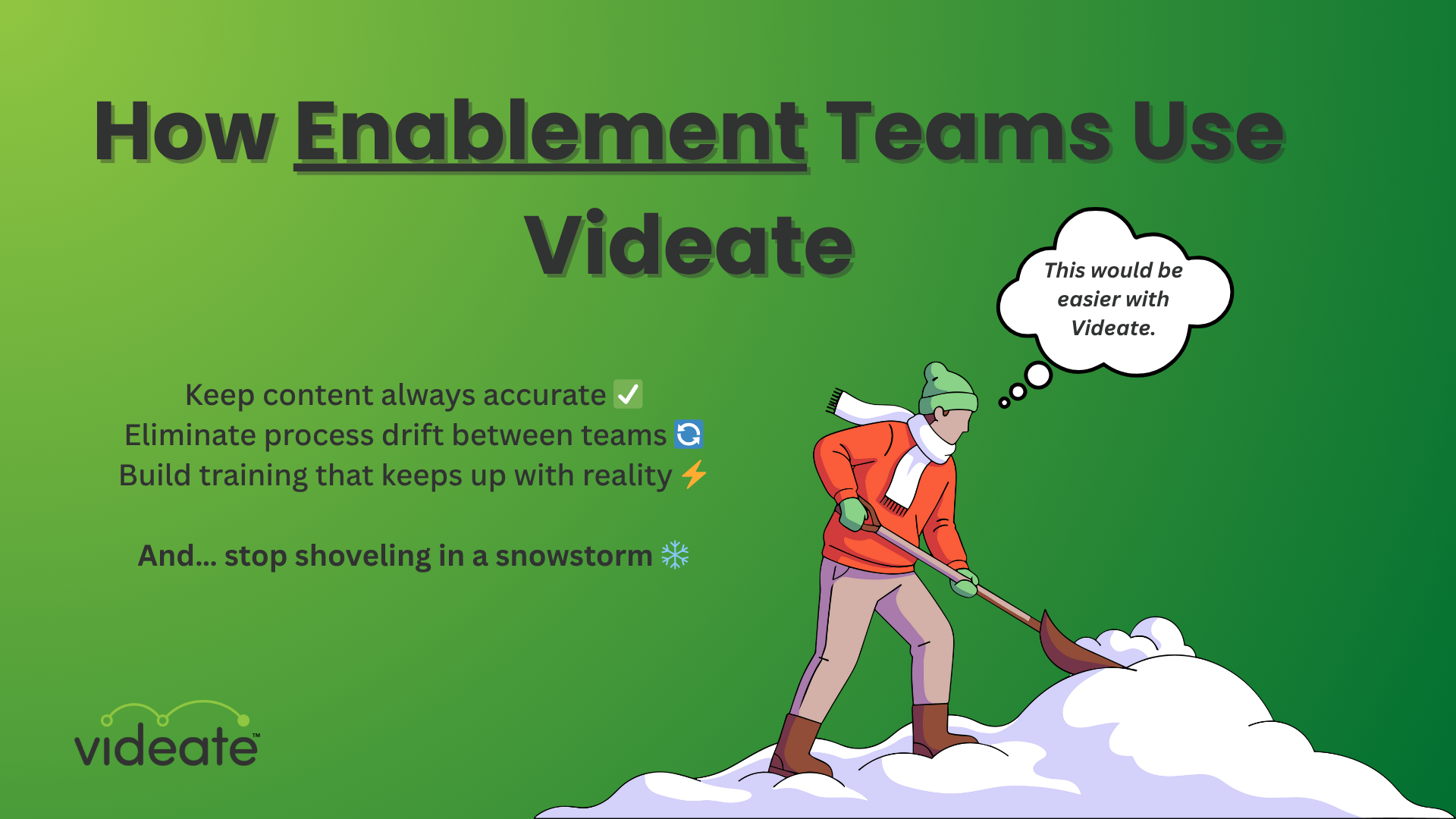
Videos demonstrating your software are some of the earliest touchpoints of your brand that your prospects, customers, and employees interact with. This means they must be current, concise, and set up to deliver maximum value for today’s viewers.
Here's what to focus on—and what to avoid.
The Challenge
Rapidly growing organizations may pump out video content quickly but have limited technical and personnel resources to continually update them at scale. They unintentionally adopt a set-it-and-forget-it outlook. It’s also not uncommon to see video creators fall for traps like making software videos overly flashy or more lengthy than needed.
Here's how to make the most of your software training videos!
Update Software Videos Frequently
To maximize the impact of your videos, you need to review and update them to keep them consistent with the software itself. When features and/or processes have changed, your video must match it.
Things to Keep in Mind When Reviewing Software Training Videos
Your industry may have seen new research come to market or change due to recent current events since a training video was last deployed. Local and federal governments may have introduced new industry legislation. Industry and legislative changes and things like new studies with groundbreaking data points are all it takes to invalidate the current content in your training videos.
Secondly, when you’re discussing a part of the software, make sure the audio, visual, and text sync with what the software shows currently. For example, take an ‘email section’ in your software. The training video must reflect exactly what the email section looks like in the software today.
Navigation, logos, and so on must be the same as the user sees to prevent cognitive dissonance and confusion. Minimizing confusion, ambiguities, and updating your videos frequently to match the current state of the software will maximize your ROI for software video production.
Tone and Presentation
Beyond the training material and technical framework, your videos' tone and technical presentation should also match the context of today’s business world. The last thing you want is for viewers to perceive your content and organization as “behind the times.”
This means people need to physically present themselves in a modern way and use today’s vernacular. If people wear old-fashioned clothes and use outdated tools and expressions, viewers will disengage. This can cause users to lose respect for your brand and impacts whether they accept the training.

Specific Do's and Don’ts for Software Videos
Do's:
- Be concise and instructional
There’s no need to ramble, go off on tangents, or embellish more than necessary. Make each point clearly and move on to the next. Always remember you have an audience with a short attention span, just like you would if you were teaching a class or making a speech to a live crowd. - Keep content simple
Remember the rule of thumb, “Explain it like I’m five.” Avoid too much technical jargon, acronyms, and abbreviations. Be discerning about the acronyms and technical terms you do use, and be sure to explain each one. - Consistency matters
Think of a user’s experience as they consume your video. This means using similar fonts, backgrounds, and colors throughout the video. Keep text long enough on the screen to be read, and have audio that a viewer can clearly understand. Also, test your video on a smartphone so that your message isn’t only consumable on a desktop.
Don'ts:
- Make the video too long
Keep videos short—a general best practice is 6 minutes for video to keep viewers’ attention from quickly fading. - Avoid overdoing special effects
Special effects can cloud the content and message of the video, and the last thing you want is the user to be distracted from your message. - Don’t over communicate
You’re talking to other professionals who are more apt to understand your content than the general public would. Therefore, there’s no need to over explain concepts. - Don’t rely solely on words
Make use of the visual medium you are using. Cut to supporting elements, graphs, pictures, etc., to visually break up any monotony in the training. Also, provide contact information for viewers to follow up with if they have questions about the content.
Want help providing successful software videos for training?
Your software videos need to be strategic and methodical, and how you deploy and update them is a part of that. We understand that it’s hard to juggle continually creating and updating quality videos among other organizational priorities.
That’s why the Videate software video platform is built to quickly update your internal and external videos with every release.
Videate cuts down the time it takes to produce and update videos so you can focus on acquiring and retaining customers.
We’ve got some exciting new features that will help you do this even faster, and we’d love to share them with you!
.png)
How Customer Success & Education Teams Use Videate




